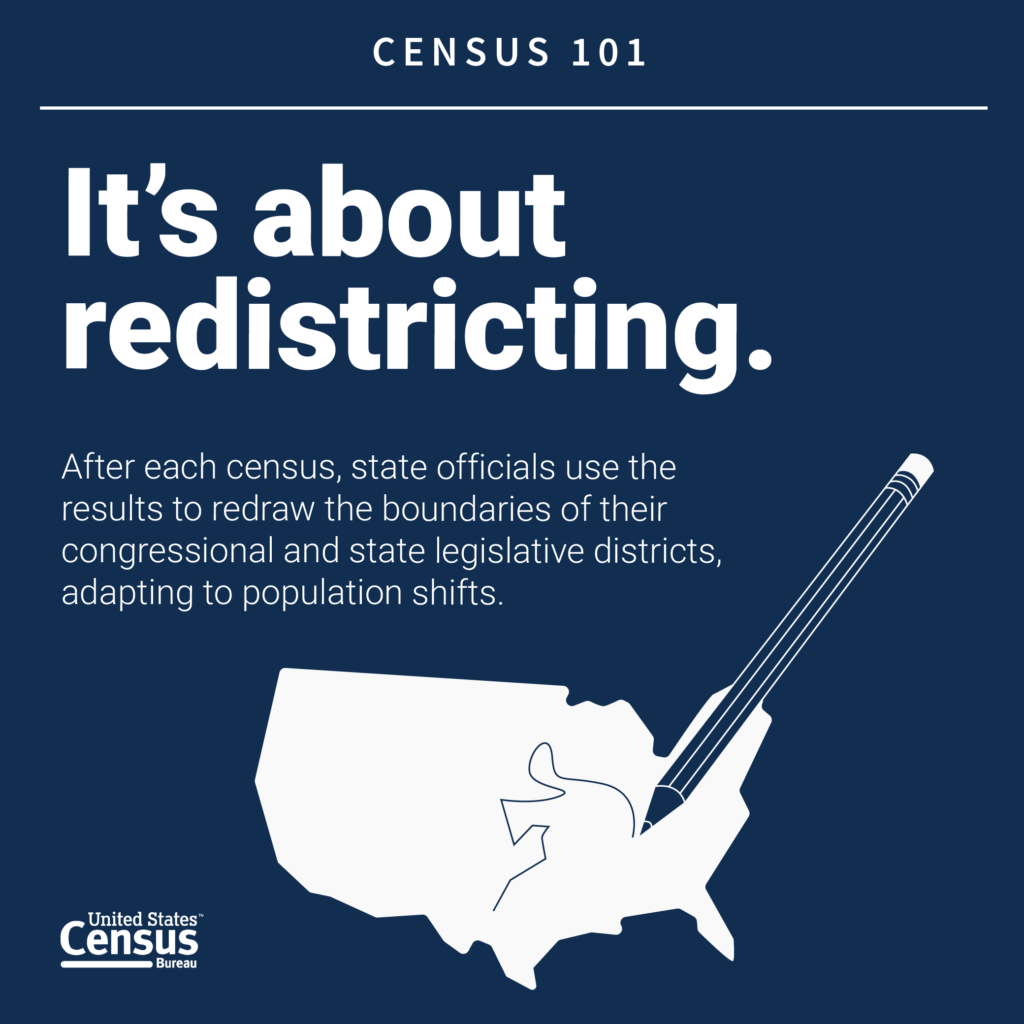Recently, the U.S. Census Bureau asked Congress for authorization to delay two very important milestones in the decennial Census. The Census counts are crucial to democracy – we use the numbers to determine redistricting, reapportionment of Congress, the data is used extensively by researchers, and of course – it’s required by the U.S. Constitution.

Due to the ongoing coronavirus pandemic, the Census Bureau has had to delay in-person enumeration until this summer. Though the 2020 Census is the first “digital-first” Census, many households are still hard to reach and will need to be counted in-person by enumerators who go door-to-door. However, with most states under stay-at-home orders and the CDC advising that we practice social distancing, it would be impossible to begin a large-scale in-person enumeration operation with the original timeline set to begin in May. The delay of enumeration causes a domino effect which delays delivery of the vital datasets for reapportionment and redistricting.
What happens when the Census delivers data to the states?
The bureau has proposed delaying by four months two important dates, including one that is a legal requirement. Congress will have to authorize extending the legal deadline for the Census Bureau to deliver state population counts from December 31, 2020, to April 30, 2021. The state population counts determine the redistribution of seats in the House of Representatives. Last year, we wrote about how that process works and what trends in population have been telling us about what reapportionment might look like.
The bureau is also asking Congress to give it four additional months to provide the necessary census data to state redistricting officials in order to redraw voting districts. That deadline would move from March 31, 2021, to July 31, 2021. This is the detailed dataset with population counts down to the Census Block level known as P.L. 94-171 Redistricting Data Summary Files. It’s the essential building block for redistricting Congressional districts, state legislative districts, local districts, and thousands of other types of districts across the U.S. that must be redrawn every ten years to balance population and provide equal representation.
How states use Census data in redistricting
Generally, legislative and congressional redistricting must be completed before filing deadlines for the next primary elections for federal and state candidates. Some states go beyond this rule and set specific redistricting deadlines. What states would be affected by a delay in redistricting data? Arkansas, Illinois, Maine, and Oregon all require that redistricting is completed before the updated Census deadline for delivering the data necessary to complete the task. Many other states require that redistricting takes place during the 2021 legislative session but do not give specific deadlines. Those states may have to figure out a new timeline as well, depending on when the 2021 session ends, which could set up big battles next year.
Virginia and New Jersey might have another year in the current districts
Two states have legislative elections in 2021 – Virginia and New Jersey. In 2011, both states were able to turn around legislative redistricting between March and the election in November, meaning new districts went into effect for the 2011 legislative election. It looks increasingly likely that neither state would be able to complete redistricting in time for new districts in 2021, delaying them until 2023. Virginia’s Senate doesn’t have an election until 2023.
In New Jersey, the overall population has only grown by 1.3% since 2010. However, the population change within the state varies. Twenty-four of the state’s 40 legislative districts actually declined in population. Using the latest Census estimates, the average district should have about 222,000 people, but many districts are above or below that target.
Districts are redrawn every ten years to have an equal population but that doesn’t mean the population stays static – people move, there are births and deaths – meaning that by the end of a district’s lifespan the population may have changed dramatically. Some districts become overpopulated and some underpopulated. The overpopulated districts further stray from the equal representation standard in legislative redistricting, established in the landmark Reynolds v Sims case. This imbalance is called malapportionment, with persons living in rural areas effectively having more representation in the state legislature than those living in urban areas. Later this year, we’ll release a study on the most overpopulated and underpopulated districts in the U.S. in advance of redistricting.
At Azavea, we closely track developments in the U.S. Census and redistricting for our Cicero and DistrictBuilder products. We’ll be monitoring Census data releases and redistricting plans so we have the most up-to-date data available for both products. For more information on redistricting, sign up for updates here.
